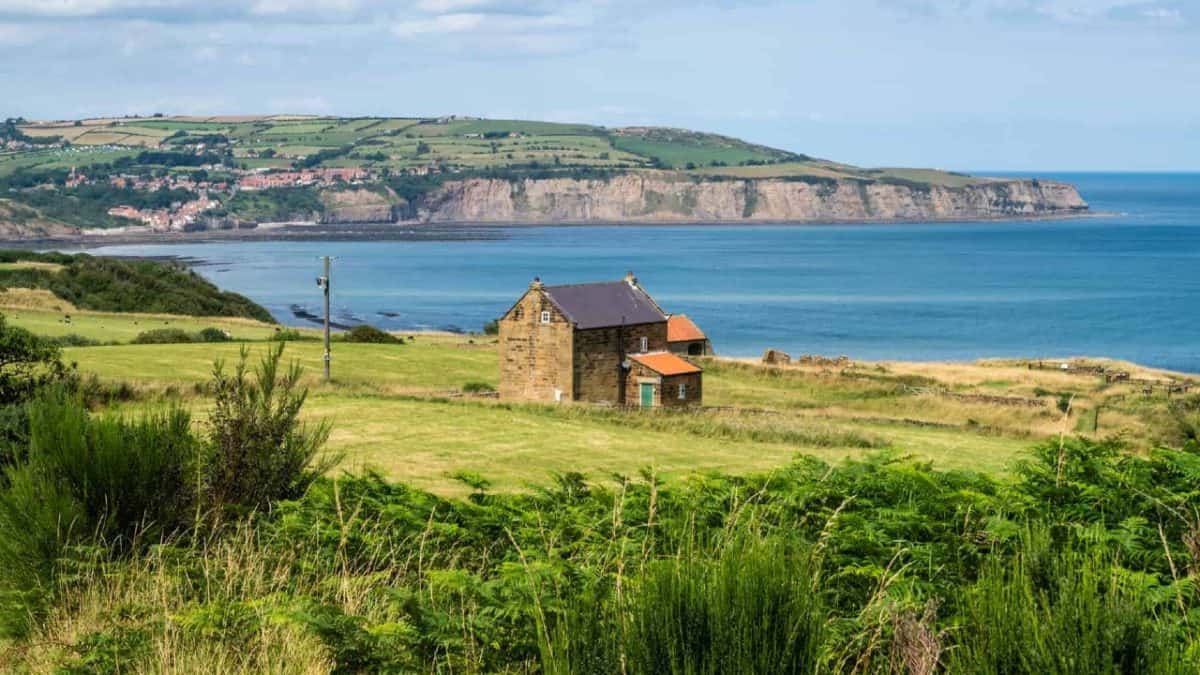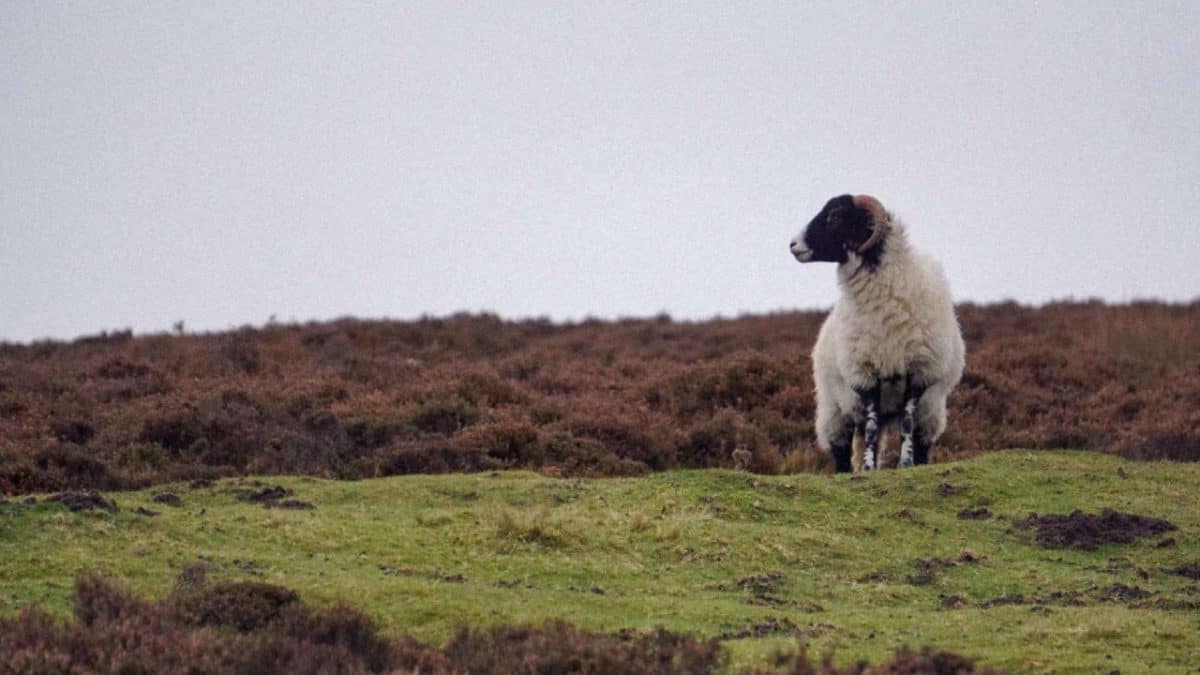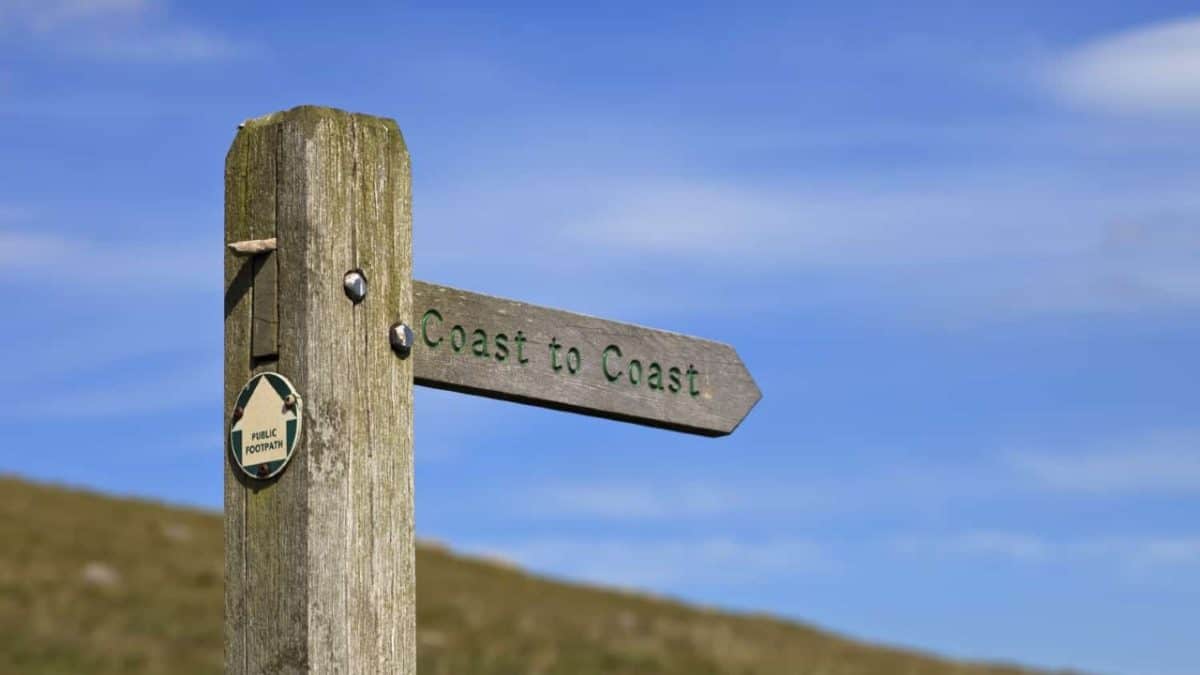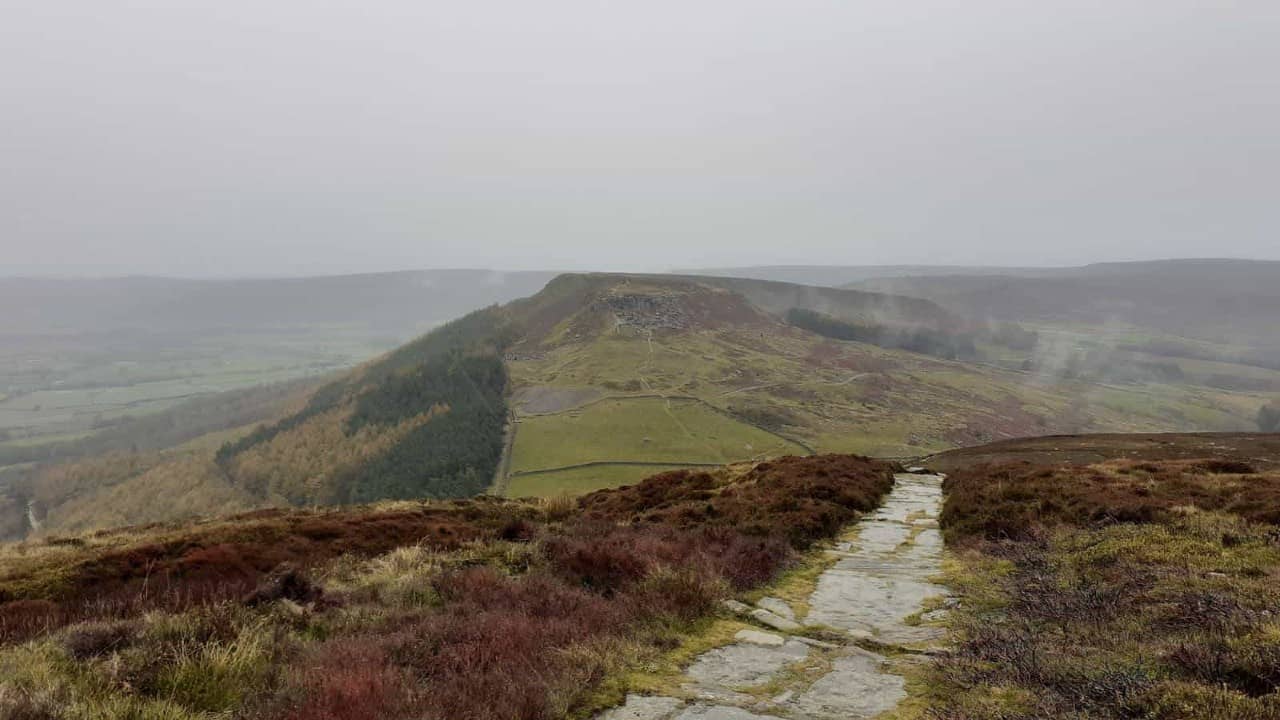The Coast to Coast Walk is one of the most famous long-distance trails in the United Kingdom. It stretches from the Irish Sea to the North Sea, and encompasses three gorgeous national parks.
The trail was devised and popularized by the legendary British fell walker Alfred Wainwright. Since 1974, the trail has been featured in many travel books, blogs, vlogs, etc. In fact, this legendary trail even became a star of its own TV series.
While travel shows may inspire you to walk the Coast to Coast, they don’t necessarily tell you how to prepare for it. If you are seriously considering taking on the Coast to Coast Walk, here’s what you need to know.
How Long Is the Coast to Coast Walk?
The Coast to Coast Walk is 195 miles long. It starts at St Bees on the Irish Sea, runs through the lake District, Yorkshire Dales, and North York Moors national parks, and ends at Robin’s Hoods Bay on the North Sea. Most hikers walk the Coast to Coast trail west to east.
Rampsgill Head in the Lakes is the highest point on the standard route (2,590 feet). The total elevation gain is about 29,000 feet. The terrain along the Coast to Coast Walk is a mix of low-lying farmland, upland moors, and mountains.
How Long Does It Take to Walk the Coast to Coast?

- Relaxed pace: 16 to 19 days
- Moderate pace: 13 to 16 days
- Fast pace: 11 to 13 days
Most hikers complete the Coast to Coast Walk within a fortnight. Most guidebooks break up the trail into thirteen stages, even though Wainwright’s original route is made of twelve stages.
A thirteen-day itinerary averages out to be about 14 miles per day. Even if you are an experienced hiker, it’s almost always best to build some rest days into your itinerary and move at a more relaxed pace. There’s just so much to do and see along the way.
Of course, you don’t even have to complete the trail in one go. For instance, many walkers decide to walk one stage each weekend. Alternatively, you can divide it into three walking holidays.
When to Go on the Coast to Coast?

If you want to avoid the worst of the winter, the best time to walk the Coast to Coast between April and October. Of course, there are hearty souls who attempt to complete the trail during the dark and freezing winter months. But, unless you have a lot of experience walking during winter, this is not a good idea.
When it comes to the hiking season on the Coast to Coast Walk, here’s what you can expect in each month:
April: Sparse crowds, moderate rainfall, and cool temperatures make April a great month to walk the Coast to Coast. However, there are fewer daylight hours on the trail in April, so you should plan your itinerary accordingly.
May and June: The days are longer and the weather is more settled and a bit milder than in April. Nevertheless, the trail is still pretty quiet in May and June.
July and August: These are usually the busiest months on the trail due to warm weather and school holidays. However, it’s important to note that August is usually wetter than May and June.
September: With relatively less rainfall, mild temps, and few crowds, this is a great time to walk the Coast to Coast.
October: As we enter October, the days begin to get wetter, colder, and shorter. If you decide to walk the Coast to Coast this time of year, you should be prepared for harsh conditions. However, you may get some crisp and incredibly clear fall days.
How Difficult Is the Trail?

The Coast to Coast Walk is a bit challenging. If you don’t have previous hill-walking experience, you may want to opt for an easier trail, here are some alternatives to the Coast to Coast. We also have a post on the best long distance hiking routes in England. Ideally, you should be at a good level of fitness and stamina by the time you take your first steps in Saint Bees.
Related: Packing list for the Coast to Coast
There are some steep rocky paths on the trail, even though there is no scrambling or climbing. In the Dales and on the Nine Standards Rigg, you can expect to come across deep, squelchy mud.
To make it a bit easier on yourself, here are a few tips for preparing for the Coast to Coast Walk:
- Start preparing at least 3 months before your walk
- Practice walking with a full lightweight backpack
- Ensure your hiking shoes are worn-in and waterproof
- Increase daily activity and exercise
- Take regular long-distance training walks (over 10 miles)
- Do more than one type of exercise (jogging, swimming, cycling)
- Consider using trekking poles
Where to Stay

The trail offers a big variety of accommodation as it is one of the most famous walks in the UK. But, for the same reason, it can be difficult to find accommodation at the height of summer. It’s best to book accommodation well in advance. Check out my guide on where to eat on the Coast to Coast Walk when thinking about accommodation.
There is something for everyone’s budget, from hostels and bunkhouses, over guesthouses and B&Bs, to luxurious hotels.
A dorm bed in a hostel or bunkhouse costs about $55 (£40) a night. When it comes to B&Bs, a double room costs about $185 (£130) per night. A double room in a hotel costs about $140 (£100) per night.
There are also baggage transfer services that operate along the trail.
The Coast to Coast walk is also very well served for campers. On top of traditional campsites, you will also find a few camping barns as well. Moreover, many farms and pubs offer space for walkers to pitch up their tents.
If you plan on camping, do know that wild camping is not quite legal in England if you don’t have permission from the landowner. That said, it is tolerated in many areas.

I love hiking, backpacking, and camping. From the Camino de Santiago to the West Highland Way in Scotland or simply a great day hike on the weekend. Hiking refreshes me, my mind, and keeps my body reasonably fit. So far I have walked three Camino routes and many other long distance hikes in the UK, Canada, and around the rest of Europe. One of the best was my hike up Ben Nevis.

